High arsenic contamination in the breast milk of mothers inhabiting the Gangetic plains of Bihar: a major health risk to infants
- PMID: 39304890
- PMCID: PMC11415992
- DOI: 10.1186/s12940-024-01115-w
High arsenic contamination in the breast milk of mothers inhabiting the Gangetic plains of Bihar: a major health risk to infants
Abstract
Groundwater arsenic poisoning has posed serious health hazards in the exposed population. The objective of the study is to evaluate the arsenic ingestion from breastmilk among pediatric population in Bihar. In the present study, the total women selected were n = 513. Out of which n = 378 women after consent provided their breastmilk for the study, n = 58 subjects were non-lactating but had some type of disease in them and n = 77 subjects denied for the breastmilk sample. Hence, they were selected for the women health study. In addition, urine samples from n = 184 infants' urine were collected for human arsenic exposure study. The study reveals that the arsenic content in the exposed women (in 55%) was significantly high in the breast milk against the WHO permissible limit 0.64 µg/L followed by their urine and blood samples as biological marker. Moreover, the child's urine also had arsenic content greater than the permissible limit (< 50 µg/L) in 67% of the studied children from the arsenic exposed regions. Concerningly, the rate at which arsenic is eliminated from an infant's body via urine in real time was only 50%. This arsenic exposure to young infants has caused potential risks and future health implications. Moreover, the arsenic content was also very high in the analyzed staple food samples such as rice, wheat and potato which is the major cause for arsenic contamination in breastmilk. The study advocates for prompt action to address the issue and implement stringent legislative measures in order to mitigate and eradicate this pressing problem that has implications for future generations.
Keywords: Arsenic contamination in breast milk; Cancer risk assessment; Gangetic plains; Groundwater arsenic contamination; Infant risk assessment; Lactating women.
© 2024. The Author(s).
Conflict of interest statement
The authors declare no competing interests.
Figures

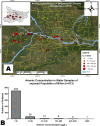
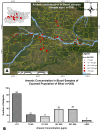
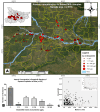
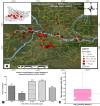

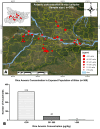
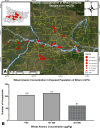
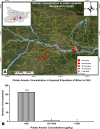

References
-
- Mandal BK, Suzuki KT. Arsenic round the world: a review. Talanta. 2002;58(1):201–35. - PubMed
-
- Devi P, Singh P, Kansal SK, editors. Inorganic pollutants in water. Elsevier; 2020.
-
- Rehman MU, Khan R, Khan A, Qamar W, Arafah A, Ahmad A, Ahmad A, Akhter R, Rinklebe J, Ahmad P. Fate of arsenic in living systems: implications for sustainable and safe food chains. J Hazard Mater. 2021;417:126050. 10.1016/j.jhazmat.2021.126050. - PubMed
-
- Hassan MM. Arsenic in groundwater: poisoning and risk assessment. Crc; 2018.
MeSH terms
Substances
Grants and funding
LinkOut - more resources
Full Text Sources
Medical

